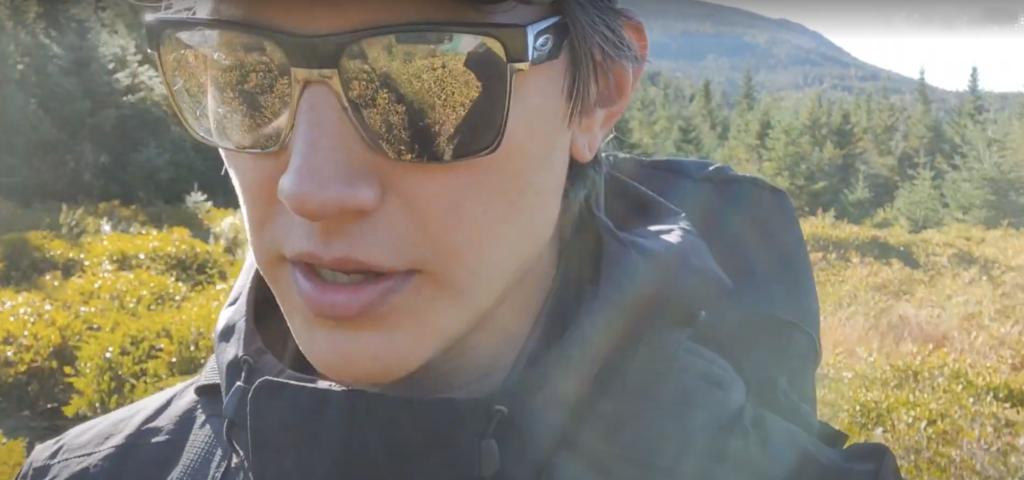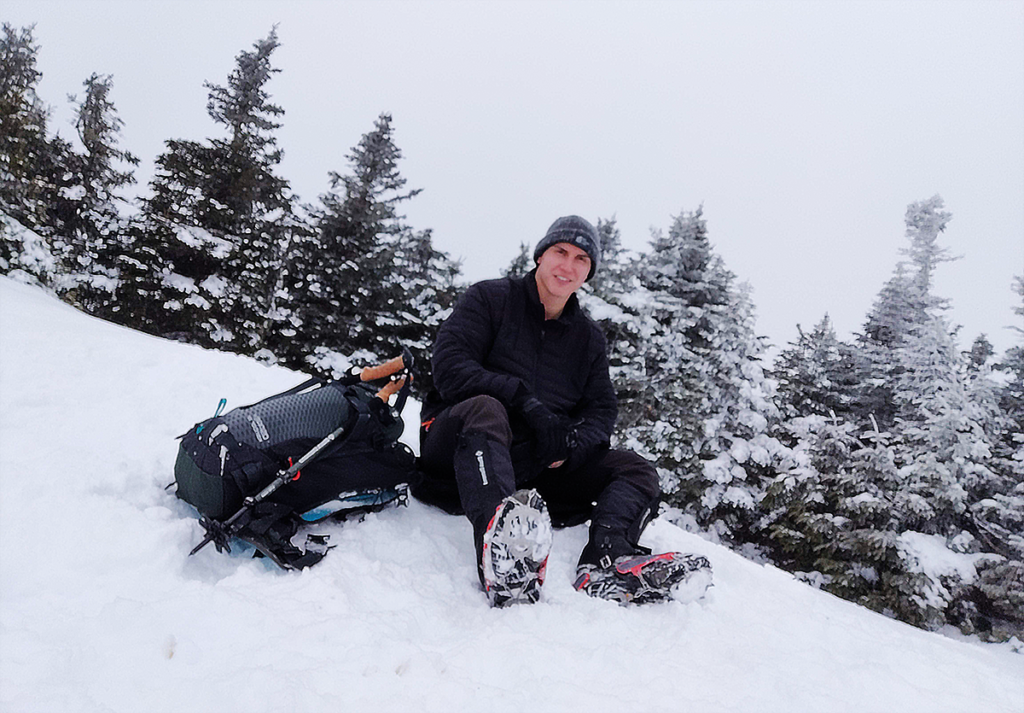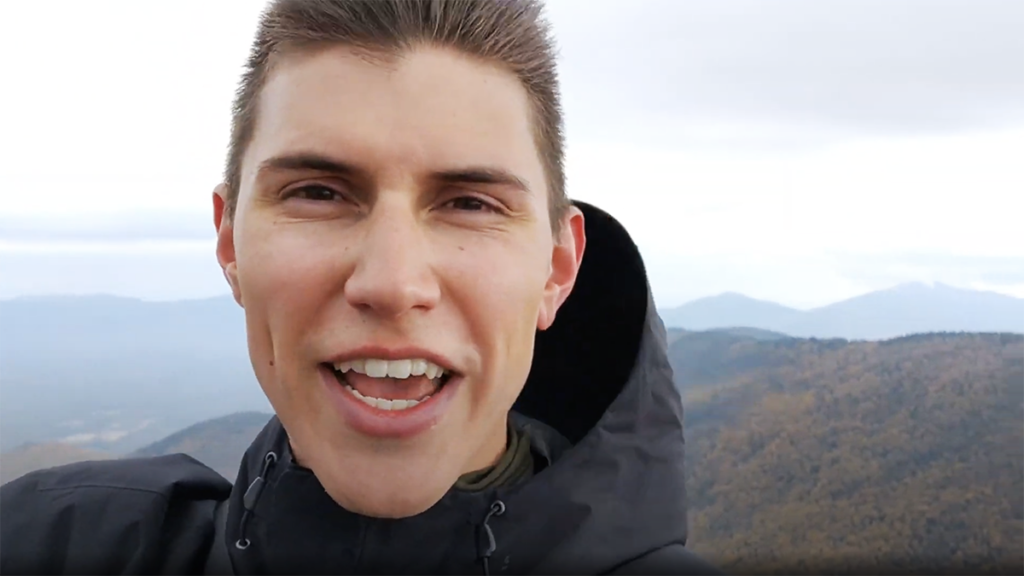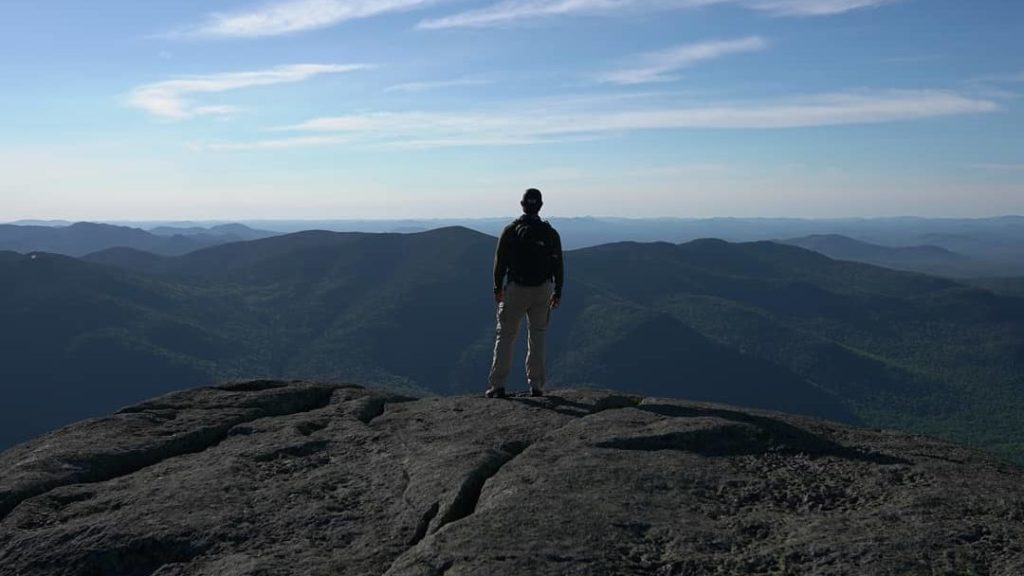Follow along with me, Jeff Fabiny, as I explore the Northeast, one hike at a time.

My first foray into actual hiking of mountains as a whole, and specifically for the the Adirondack 46 and eventually the NE 111 (or 115) started in the Summer of 2019. I can say for sure there was a lot of excitement and emotion. I was a spry 29 year old, with a newfound interest in outdoors, exploring, and adventure. I had big dreams, and still do, of trekking and witnessing the most interesting, far-reaching, and intimate, hard-to-reach areas our planet has to offer us. My ambitions include lofty goals, even the Seven Summits.
Like any good Master’s Degree student, which I was at the time, I knew my goals needed to be more than whimsical ideals; they needed to have a plan. I put the Seven Summits on the back-burner, and for a first-time hiker I think most of us can agree that was for the best, and I researched more feasible alternatives. Feasibility in this regard meant more than just my physical capability and adventure know-how; it also included time, energy, and money. With these limitations in mind, I asked myself the most basic and obvious question: “What is nearby”?
I grew up in Western NY, but found my second home in Rochester in 2013 when I relocated for work.
The Adirondack Park is over 6 million acres of forest preserve, owned by New York State. Protected by law from harmful human interactions, it is what is known as an old growth forest, a forest so free from human intervention that it creates an ecosystem that would otherwise not be possible. It is stunning, beautiful, and a day trip from Rochester, NY.
It didn’t take much time at all before Google searches of “mountains to climb in the Adirondacks” turned up results for the 46. Intrigued, I investigated what this 46er business was about, and I got my answer. The 46 peaks in the Adirondack Park above 4000 feet of elevation make up this challenge, and climbing them all makes you a 46er.

It sounded like the perfect opportunity: a good amount of effort to be considered a substantial challenge, and enough work to do to get a really good start and a grasp on the fundamentals on hiking and mountaineering. I wasn’t starting from zero, however. I had been here before in the Adirondacks in my childhood.
As a teen, I had hiked and camped for several days as part of a Summer program. The program was called STEP, a stress management Summer camp for kids, and it was hosted by Houghton College which was nearby to my hometown of Wellsville in a tucked away county in New York. It was an opportunity my family jumped at enthusiastically. My enthusiasm coming from the thrill of venturing out into the wilderness, going on what seemed and was a real adventure. My parents’ enthusiasm coming from the fact that they could ship me away for ten days at the severely discounted rate of $50.

I attended STEP for several years. And while each year my back country knowledge grew, the first year I was very much what we’d call wet behind the ears. I remember, embarrassingly, my first year at STEP where one of the first things we did each year was vet what we had brought in our packs. There was a list of required items, but it was a minimum and the degree to which any of the items would fulfill its purpose was always a variable. For example, socks of course are required, but if you pack a pair of ankle-cut sports socks you’ll be in for a bad time. In a well-meaning but misguided and ineffective over-abundance of caution, I had packed a toiletries kit which I had received for Christmas. It included somewhat reasonable things like nail clippers and scissors (“somewhat” being the key word there). It has also included a shoe horn. Needless to say, that vetting was the target of some jokes during my time at STEP that year.
Embarrassing anecdotes aside, I did acquire a lot of valuable know-how when it comes to back country hiking and camping. The next year at STEP, my vetted pack was not a joke, but an example that was held up for others to see of what to do. It was extremely spartan; there was nothing in my pack that did not serve an identified purpose. Each item was packed separately in a sealed plastic bag, sometimes double packed, with the excess air squeezed out. Water-proof, feather-weight, and highly compressed I was done packing my bag long before anyone else, and at half the space and half the weight. It was the same approach I would be using for my 46er adventure. For my first peak, I would not be camping in the wilderness, but it was still a several hour excursion into the back country. You have to have put more than a modicum of thought into what you brought.

And here is probably the natural breaking point to begin sharing my journey…